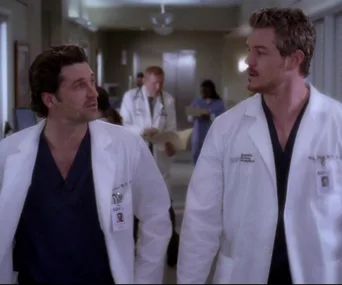Is there a mathematical formula for finding love?
Dr Hannah Fry is a mathematician who believes that there a certain calculations you can apply to your dating life that will up your odds of finding “the one”.
In her book, The Mathematics of Love, Fry – a mathematician and complexity scientist from University College London’s Centre for Advanced Spatial Analysis – has applied mathematics to explore themes like stages of romantic journey, chatting people up and settling down but perhaps the most fascinating topic explored is online dating.
In search for patterns of how lonely singles talk and interact with each other online Fry studied data collected by dating site OKCupid – a site that was incidentally started by mathematician Christian Rudder – and began to unearth the maths behind attraction.
“Now you have this world of data that allows you to look into the way that people speak to one another, and the way that people talk about themselves and interact with one another, in a way that we were never able to before,” Fry said in a recent interview with The Guardian.
Fry said that from a statistical point of view the entire history of an online relationship can be tracked, and that opens up this type of dating to analysis and investigation which could result in formulas that could optimise outcomes.
How do you get more people to message you online?
One surprising result that Fry writes about in her book is that looks have an effect on online dating, but not in quite the way you would expect.
During a TED talk at Binghamton University, UK, when Dr Fry discussed her findings she declared that on an online dating site “how attractive you are does not dictate how popular you are,” and actually “having people think you are ugly can work to your advantage.”
Using a graph that scored people from really attractive to really ugly, Fry explained that if you want to up your chances of finding love online you should seek to have a spread of where people would rate you on that graph from hottest person to ever live to put a paper bag over your head ugly.
“It’s this spread that counts,” said Fry, “It’s this spread that makes you more popular on online internet dating websites.”
Fry says this all starts to make more sense when you actually think of the other people online looking to reach out to their cyber crush.
“Let’s say that you think that somebody is attractive but you suspect that other people won’t necessarily be that interested,” said Fry. “That means that there is less competition for you to get in touch whereas, compare that to if you think somebody is attractive but you suspect that everybody is going to think that they are attractive as well, why would you bother humiliating yourself?”
Fry goes on to say that instead of picking online dating pictures that minimise those things that make you different – like your weight or height or baldness – you should actually just embrace them because they could be the advantages that make you divisive and earn you that desired spread on the graph.
The example Dr Fry offers of someone who has successfully done this Lauren Urasek, a nice looking woman covered in tattoos who happens to be the most messaged woman on OKCupid.
Sup? pic.twitter.com/4gBeZsIiNN
While most of the data Dr Fry has worked with has been heterosexual couples she believes that the take-home advice can be accurately applied across the board.
When is the right time to settle down?
So mathematically, after you kill it online with your totally average profile picture, when is the right time to step away from the keyboard and tie the knot?
Fry cites “Optimal Stopping Theory” as the formula to use when determining the best time to settle down.
Put bluntly this formula tells you how many people on average you need to reject before you find your ideal mate – which is roughly 37 per cent.
Basically, Fry postulates that if you start dating when you are 15 and ideally want to settle down by the time you are 35, then there are a number of people you could date across your lifetime with varying levels of happily ever after potential. But statistically you should just reject anyone you met before the age of 24 from being serious marriage material.
Then once you have dumped your first 37 per cent you should pick the next person that comes along that you think is “better than everybody that you’ve seen before,” as Dr Fry puts it.
“Now if you do this it can be mathematically proven that this is the best possible way of maximising your chances of finding the perfect partner,” said Fry.
But the author does admit that this method comes with some risks.
For example, if you do follow the formula strictly and happen to meet your ideal partner within the first 37 per cent of partners then you will have to reject them and then because you will never meet anyone “better” than them post-37 per cent you run the risk of dying alone surrounded only by your pet Alsatians – all nine of them.
Also, if all you did was date boring people within the first 37 per cent and then you meet someone marginally better, you might find yourself settled in a life where the most interesting thing to happen is a dinner date to Sizzler.
“It comes with risks,” Fry told the Independent in a recent interview. “But people tend to do this anyway; they don’t choose to marry the first person they meet.”
Fry said apart from trying to understand the dating data she wanted to write the book to show that maths isn’t a “rigid and boring topic” – it can be fun and applied to many different scenarios to get results.
Fry told The Independent the maths of love doesn’t have to rule how you find your ideal mate but mathematical formulas can provide great strategy.
“Having these guidelines is better than nothing at all,” said Fry.
And you don’t have to be a arithmetic genius to optimise your dating outcomes because the data shows humans do most of the calculations intuitively, but “maths is just giving you a way to describe it,” Fry told The Guardian.
So then, what is the number one calculation for finding love?
“There isn’t one,” said Dr Fry. “There isn’t one single equation to help you fall in love. It’s just about being logical and sensible.”



